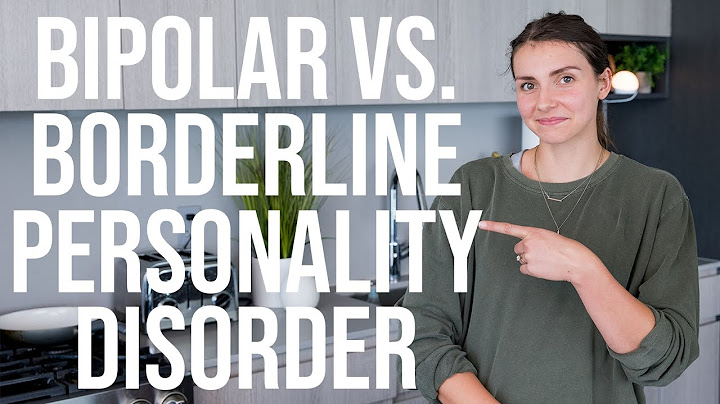 Show
"What will I have for dinner?" "Is it going to rain later?" "I wonder what she meant by that." Questions or comments like these silently passing through our minds reflect how most of us think; they're normal. When the comments heard internally are the voices of other people, however, then psychiatrists suspect schizophrenia. Among the myths surrounding schizophrenia, one of the most persistent is that it involves a "split personality," two separate and conflicting identities sharing one brain. A National Alliance on Mental Illness survey found that 64 percent of the public shares this misconception. "It's an extremely common misunderstanding," says Randon Welton, assistant professor of psychiatry at Penn State Milton S. Hershey Medical Center. "It's based on the name. If you go to the Greek roots of the word—schizein, meaning splitting and phren, meaning mind—you have "split brain" or "split mind." However, the intended reference is to a split between rationality and emotions, not a split within a personality, explains Welton. Split personality, more properly, is an old name for multiple personality disorder, which is itself an outdated name for dissociative identity disorder (DID), an officially recognized but still controversial diagnosis. Welton notes that DID came to the public's attention following the release of books and films such as The Three Faces of Eve and Sybil, accounts of women who developed multiple, distinct personalities following severe abuse as children. "I would describe DID as a trauma-based illness," Welton says. Those affected by it have "at least two and often more distinct identity states which each have fairly consistent patterns of relating to the environment." The American Psychiatric Association definition specifies that "at least two of these identities or personality states recurrently take control of the person's behavior." By contrast, Welton describes schizophrenia as "a largely genetic illness, one that seems to be clustered within families. It seems to be more neurodevelopmental, influenced by how the brain develops. It usually presents in late teens to young adulthood and is more common than DID, with 2.2 million Americans living with the disease. Explains Welton, "You see a gradual, overall decrease in functioning with acute exacerbation, lasting weeks or months, of overtly psychotic symptoms--unless they are caught and treated." While trauma is associated with both disorders, Welton explains that "the traditional difference is that with schizophrenia, the trauma tends to follow the disease. It is a consequence of the illness; it is not causative. Trauma doesn't make someone have schizophrenia, whereas for almost everyone with DID I've ever heard about, it is a reaction to the trauma." Schizophrenia is classified as a psychotic disorder and managed primarily through drugs, whereas DID is considered a developmental disorder that is more responsive to psychotherapy and behavioral modifications. On the surface, the difference between the two disorders seems clear cut. But some psychiatrists, such as Brad Foote of the Albert Einstein College of Medicine, are warning their peers that it may be possible to confuse the two conditions early in the course of treatment. This may happen if voices of alternate personalities in a case of DID "leak through" and comment on events, or talk directly to the core, central personality, without completely taking it over. "Traditionally, any time a patient reports hearing voices like this, it was a strong indication of schizophrenia," Welton says. "Psychosis is not a diagnostic key for DID but it is a common finding in that they will hear one personality talking to another or a personality commenting on them." If these observations are accurate, Welton says "it would be very easy to put that person into a psychotic disorder category because you did not ask the right questions or you didn't ask in the right way." Hearing voices may be more complicated than doctors or patients knew. Randon Welton, MD, is assistant professor of psychiatry at the Pennsylvania Psychiatric Institute, Penn State Hershey Medical Center. He can be reached at . Last Updated October 26, 2010
Differences between multiple personality disorder and other diagnostic groups on structured interviewC A Ross et al. J Nerv Ment Dis. 1989 Aug. AbstractThe Dissociative Disorders Interview Schedule was administered to 20 subjects with multiple personality disorder, 20 with schizophrenia, 20 with panic disorder, and 20 with eating disorders. The findings showed that multiple personality can be differentiated from the other groups on variables such as history of physical abuse, sexual abuse, substance abuse, sleepwalking, childhood imaginary playmates, secondary features of multiple personality and extrasensory and supernatural experiences. Those with multiple personality also differ from the other groups on DSM-III criteria for multiple personality, psychogenic amnesia, and psychogenic fugue. The groups did not differ on the number of subjects who had had a major depressive episode. Similar articles
Cited by
MeSH termsLinkOut - more resources
Why DID they change multiple personality disorder to DID?DID was called multiple personality disorder up until 1994 when the name was changed to reflect a better understanding of the condition—namely, that it is characterized by fragmentation or splintering of identity, rather than by proliferation or growth of separate personalities.
Is DID the same as multiple personality disorder?Dissociative identity disorder (DID), previously known as multiple personality disorder (MPD), and colloquially known as split personality disorder, is a mental disorder characterized by the maintenance of at least two distinct and relatively enduring personality states.
Is DID still called multiple personality disorder?Dissociative identity disorder is still sometimes called multiple personality disorder (MPD). This is because many people experience the changes in parts of their identity as completely separate personalities in one body.
What's the difference between split personality and dissociative identity disorder?The only proven—and also the most common—cause for split personality is trauma. The trauma can come in any form but the development of split personality, better known as dissociative identity disorder, is a result of trying to escape or hide from a trauma.
|

Advertising
LATEST NEWS
Advertising
Populer
Advertising
About

Copyright © 2024 pauex Inc.












